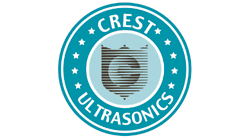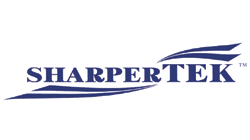Ultrasonic Cleaning Best Practices: 7 Steps to Satisfactory Results
|
Let Us Help We can help you
find the perfect storage unit for your needs and budget. |
| Quick Answers to Satisfactory Cleaning Results |
Ultrasonic cleaning equipment is employed across a broad spectrum of applications. Applying this list of ultrasonic cleaning best practices will contribute to
- longer equipment service life
- increased throughput, profit and customer satisfaction
That's why adopting these "best practices" to protect your investment should be a top priority. Before continuing, however, we suggest reading our tutorial on how ultrasonic cleaners work. It describes how they work and provides important criteria when it comes to selecting a unit that best meets your needs.
Step 1. Always Use a Basket
Parts being cleaned should never be in contact with the ultrasonic cleaner tank. Ultrasonic vibrations caused by transducers mounted to the tank will cause parts to wear against the tank surface.
Eventually this may result in a leak.
Baskets are designed to keep parts being cleaned at the optimum position in the tank to help ensure thorough cleaning. Baskets also facilitate loading and removing parts from the cleaning bath. For more on this see this post on basket design. It notes that cleaning larger parts may call for suspending them in the solution.
Some ultrasonic cleaners are shipped with a basket. Otherwise baskets are ordered as accessories.
Don’t overfill your basket with parts. It will decrease cleaning efficiency and possibly cause part damage due to them vibrating against each other.
Step 2. Maintain Proper Cleaning Solution Levels
Your ultrasonic cleaning equipment is designed to hold a specific volume of cleaning solution. Some tanks indicate the volume by a fill line; otherwise they should be approximately 2/3 full.
Too much solution will impact cleaning efficiency. Under-filled tanks may damage heaters and transducers. When filling the tank take into account solution displacement caused by parts being cleaned.
Note that repeated cleaning will result in decreased cleaning efficiency due to contaminant load. You can postpone this by skimming off contaminants that float to the surface and filtering the solution in large tanks. But eventually you’ll need to replace the solution. Dispose of it along with skimmed-off contaminants according to local regulations.
For more information on this ultrasonic cleaning best practice check our post on extending ultrasonic cleaning solution performance.
Step 3. Maintain your Cleaning Tank
When you change your cleaning solution take the time to clean the tank by removing sediments and harder deposits that settle to the bottom during cleaning cycles. Follow recommendations in the instruction manual.
Never use abrasive cleansers on your tank. Lime deposits can be removed by operating the cleaner filled with a solution of elma tec clean S1 diluted according to instructions. Rinse the tank with clean water and let it drain dry.
Step 4. Select the Correct Cleaning Solution Chemistry
The correct ultrasonic cleaning solution is as important to your cleaning operation as the ultrasonic cleaning equipment you use. It is a key best practice for getting the most out of your equipment.
The choices are based on what you are cleaning and the type of contaminants being removed.
To help you make the right choice iUltrasonic offers a variety of formulations. These are described in our post on cleaning solution selection.
Two Important Cautions on Ultrasonic Cleaning Solutions
- Cleaning solutions with mineral acids or a high acid concentration can cause pinholes in your cleaning tank.
If the need arises for this type of strong acidic solution, use an acid-resistant tub sized for your cleaning tank. The tub and parts being cleaned are positioned in the ultrasonic cleaner tank filled with water and a few drops of liquid detergent. Cavitation passes through the tub and acts on the parts.
- Flammable solvents such as acetone, IPA and toluene used in a standard ultrasonic cleaner tank pose a serious explosion hazard.
If you must use a volatile solvent in your cleaning operation you'll need to employ special precautions to meet NEC, local and your company's safety requirements regarding operations in hazardous locations.
You'll find more details on this important subject in this post on best practices when cleaning with flammable solvents. It includes several options offered by iUltrasonic supporting ultrasonic cleaning best practices.
Step 5. Don't Clean Longer than Necessary
Check cleaning progress by removing the basket and examining parts. (They may be hot.) Cleaning longer than necessary increases wear and tear on the cleaning tank and products being cleaned.
Step 6. Turn Off Your Unit when Not in Use
Heat created by the ultrasonic cleaning process can cause the cleaning solution to evaporate below recommended levels.
There are options to reduce evaporation, including tank lids (standard on some models) or using cooling coils sized for the tank.
A best practice for ultrasonic cleaning in this regard is to turn off your ultrasonic cleaner when not in use - even though some units such as the Elma Ultrasonic P series automatically turn off after a certain number of hours. Doing so helps reduce your utility bills.
Step 7. Schedule Equipment Performance Checks
Over time, the performance of your ultrasonic cleaner could degrade, resulting in longer cleaning cycles or unsatisfactory results. Checking the performance of your ultrasonic cleaner makes sense right from the beginning. By doing so and keeping records (just as your physician and auto service department do) you'll have a benchmark to which you can compare results of subsequent tests.
Other Suggestions Supporting Ultrasonic Cleaning Best Practices
Reduce Noise
While ultrasonic frequencies are above the level of hearing, operating an ultrasonic cleaner will created noise due to tank wall vibration.
Lower frequency cleaners are noisier than higher frequencies. Folks working in proximity to an operating cleaner may need to wear ear protection. A tank lid will also reduce the noise level.
Another option is to isolate the unit in a properly sized mute box.
Choose Accessories to Facilitate Cleaning Cycles
The old saw "the right tool makes the work go smoother" (or something like that) applies as well to supporting ultrasonic cleaning best practices. A few such accessories are mentioned above.
Others that relate to specific cleaning tasks include
- Erlenmeyer flask clamps used in mixing, emulsifying other otherwise processing samples
- Hook racks to correctly support jewelry in the ultrasonic cleaner bath
- Drying units to blow heated or room temperature air around cleaned parts
Ventilation
As noted above ultrasonic activity causes vaporization of the cleaning solution, especially as it warms. For that reason we suggest placing your equipment in a well ventilated area. Covering the tank will capture this condensation with the added benefit of reducing noise.
Need More Information or Help?
Contact the experts at iUltrasonic for suggestions on how to improve ultrasonic cleaning best practices in your organization as well as equipment and operating procedures.






